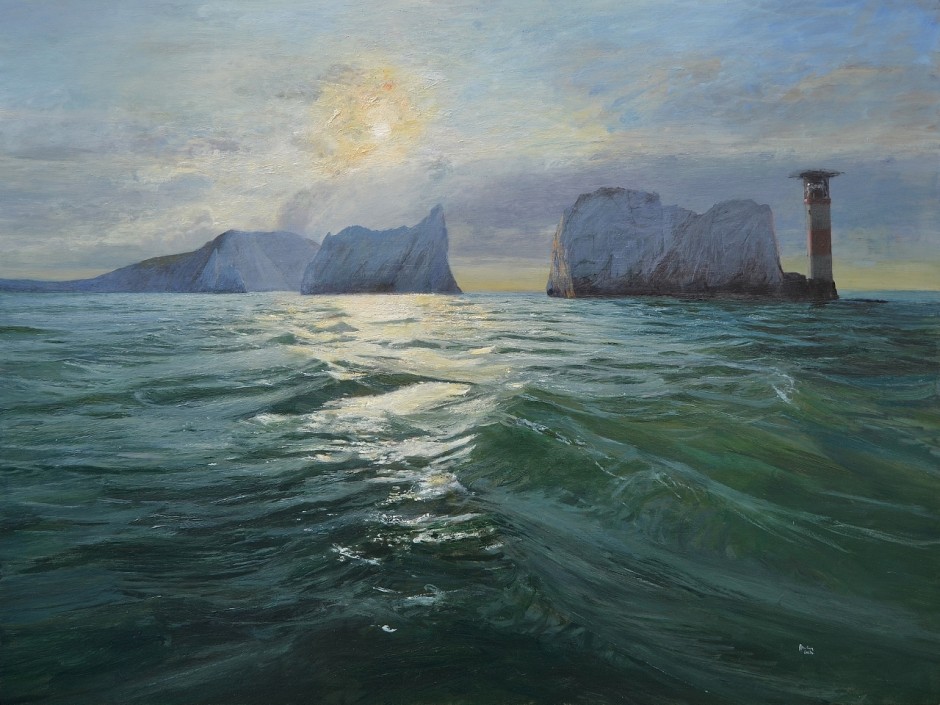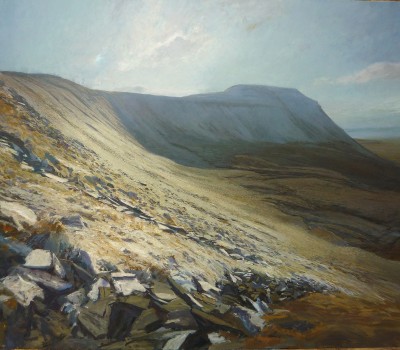Passing the Needles into the Solent
The tidal rip of the Solent is well known and still challenges the modern sailor. It is possible that these waters, not the coast of Kent, witnessed the invading Roman army. In any case the Roman presence in the area from the earliest days of the invasion is without doubt and the recognisable features of this coastline would have been well known to traders and those planning the invasion. The Isle of Wight, Vectis, is first mentioned in writing by Ptolemy, The name Vectis may refer to it being at the fork or divide of the channel of the Solent. Later historian Suetonius mentions that the entire island was captured by the Vespasian, later to become emperor. It seems this was a worth while conquest by Vespasian as the rich farm land of the island supported at least five Roman villas and their farms.
The distinctive row of chalk stacks, the Needles, and the lighthouse built in 1859 mark the western approaches to the Solent channel. The Needles are all that now remains of a vast chalk ridge which once separated the now lost river Solent from the sea, They act as a reminder of a very different landscape and the dynamic forces that have shaped this area. The Needles them
selves are features, which even within documented history, have changed shape.
This is a dynamic place, churning tides, changing light and the slow erosion of the cliffs that sometimes produces a dramatic slip to reveal a pristine chalk face. It is place Roman sailor would have been most wary of, and yet it could also offer the hope of shelter in rough seas and the return to the fertile lands of the island of Vectis




